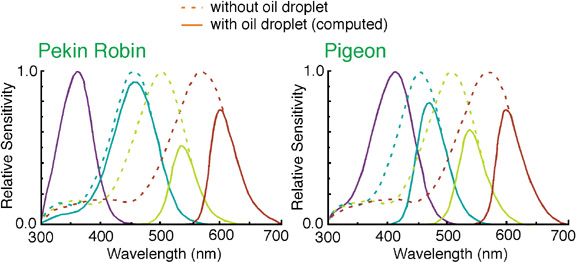Figure 9C. The effect of oil droplets on photoreceptor sensitivity. Pigmented oil droplets generally absorb light at the short-wave end of the spectrum. As such they shift the photoreceptor's peak absorption toward longer wavelengths. The dashed curves in these plots indicate the absorption spectra of the outer segments when measured from the side (i.e., ignoring absorption by any other structures within the photoreceptor). These eight curves for the Pekin robin (Leothrix lutea) and the rock dove (i.e., the pigeon, Columba livia) are similar to the starling absorptions shown in Figure 7B (where the effect of oil droplets was similarly ignored). The solid curves show the effect that the oil droplets associated with these outer segments have upon the photoreceptors' actual absorption spectra. Note that the solid curves have much less overlap with each other than do the dashed curves. That is, the oil droplets reduce the redundancy in the sampling of different wavelength regions. For example, without oil droplets all four of the cones from each bird would be substantially sensitive to lights with wavelengths between 300 and 400 nm. With the oil droplets in place, only one of the pigeon's and two of the robin's photoreceptors are appreciably responsive to these wavelengths. (Adapted from Vorobyev et al. 1998). See Figure 9A, Figure 9B.
